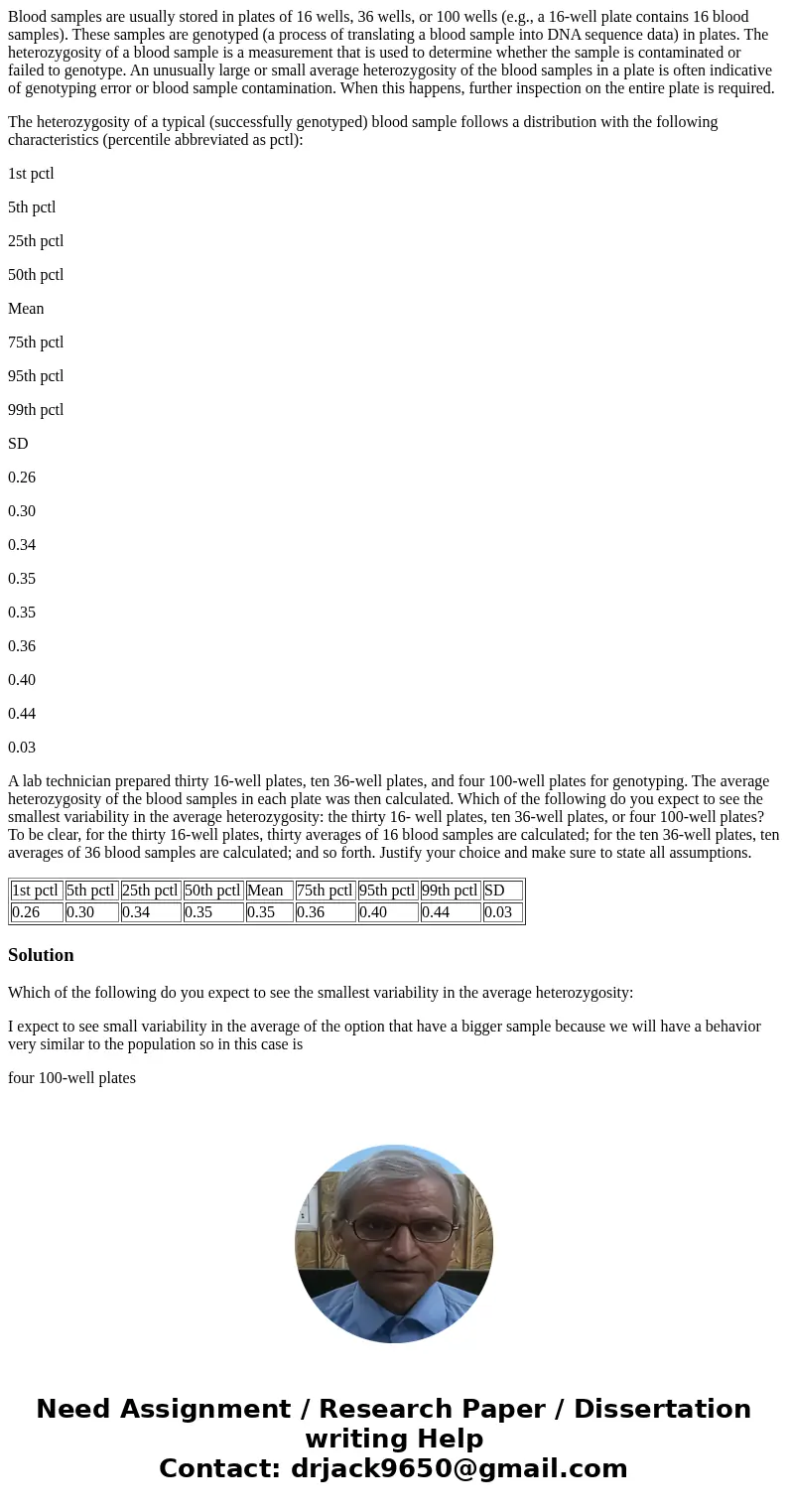Blood samples are usually stored in plates of 16 wells 36 we
Blood samples are usually stored in plates of 16 wells, 36 wells, or 100 wells (e.g., a 16-well plate contains 16 blood samples). These samples are genotyped (a process of translating a blood sample into DNA sequence data) in plates. The heterozygosity of a blood sample is a measurement that is used to determine whether the sample is contaminated or failed to genotype. An unusually large or small average heterozygosity of the blood samples in a plate is often indicative of genotyping error or blood sample contamination. When this happens, further inspection on the entire plate is required.
The heterozygosity of a typical (successfully genotyped) blood sample follows a distribution with the following characteristics (percentile abbreviated as pctl):
1st pctl
5th pctl
25th pctl
50th pctl
Mean
75th pctl
95th pctl
99th pctl
SD
0.26
0.30
0.34
0.35
0.35
0.36
0.40
0.44
0.03
A lab technician prepared thirty 16-well plates, ten 36-well plates, and four 100-well plates for genotyping. The average heterozygosity of the blood samples in each plate was then calculated. Which of the following do you expect to see the smallest variability in the average heterozygosity: the thirty 16- well plates, ten 36-well plates, or four 100-well plates? To be clear, for the thirty 16-well plates, thirty averages of 16 blood samples are calculated; for the ten 36-well plates, ten averages of 36 blood samples are calculated; and so forth. Justify your choice and make sure to state all assumptions.
| 1st pctl | 5th pctl | 25th pctl | 50th pctl | Mean | 75th pctl | 95th pctl | 99th pctl | SD |
| 0.26 | 0.30 | 0.34 | 0.35 | 0.35 | 0.36 | 0.40 | 0.44 | 0.03 |
Solution
Which of the following do you expect to see the smallest variability in the average heterozygosity:
I expect to see small variability in the average of the option that have a bigger sample because we will have a behavior very similar to the population so in this case is
four 100-well plates

 Homework Sourse
Homework Sourse